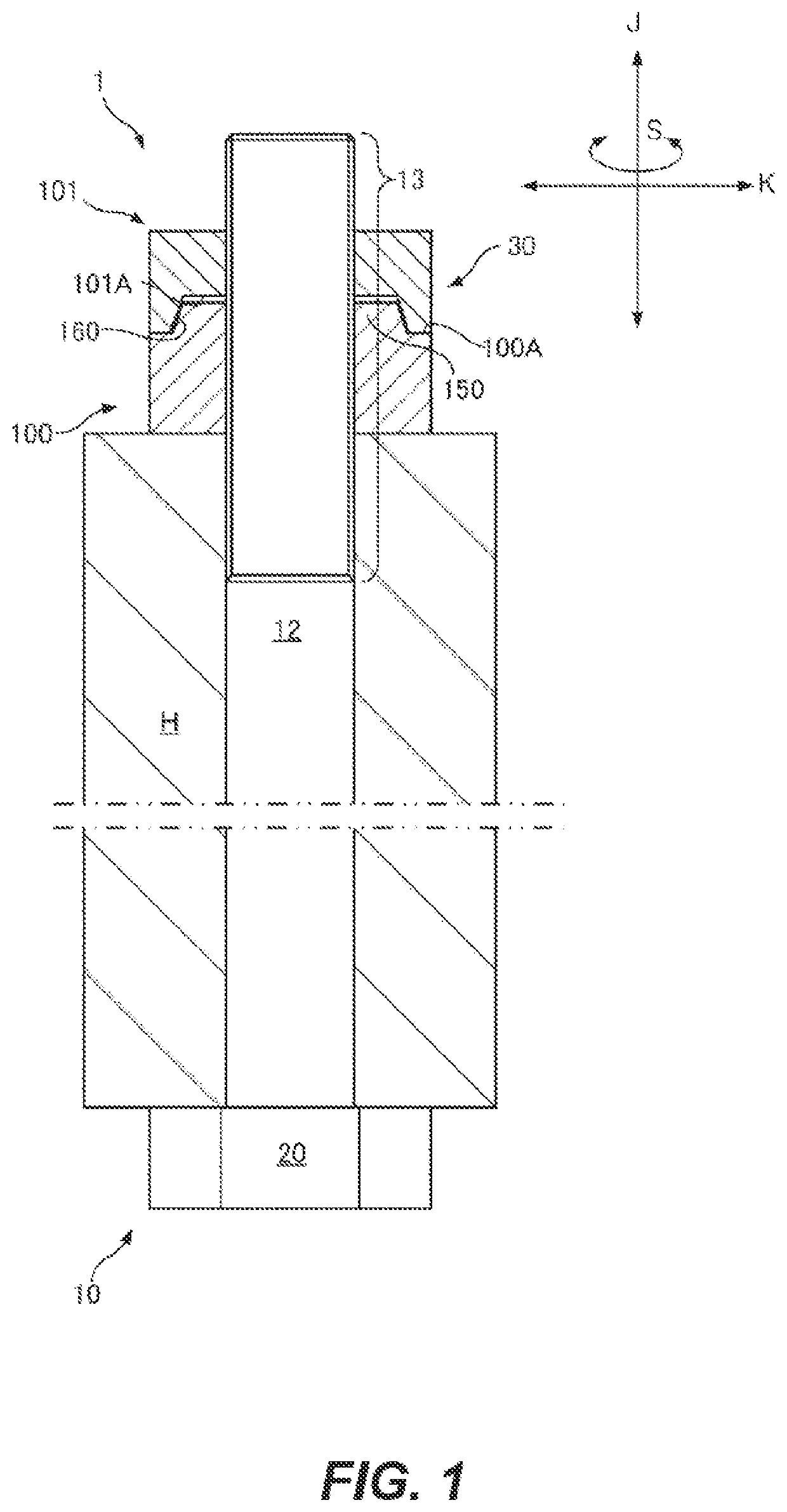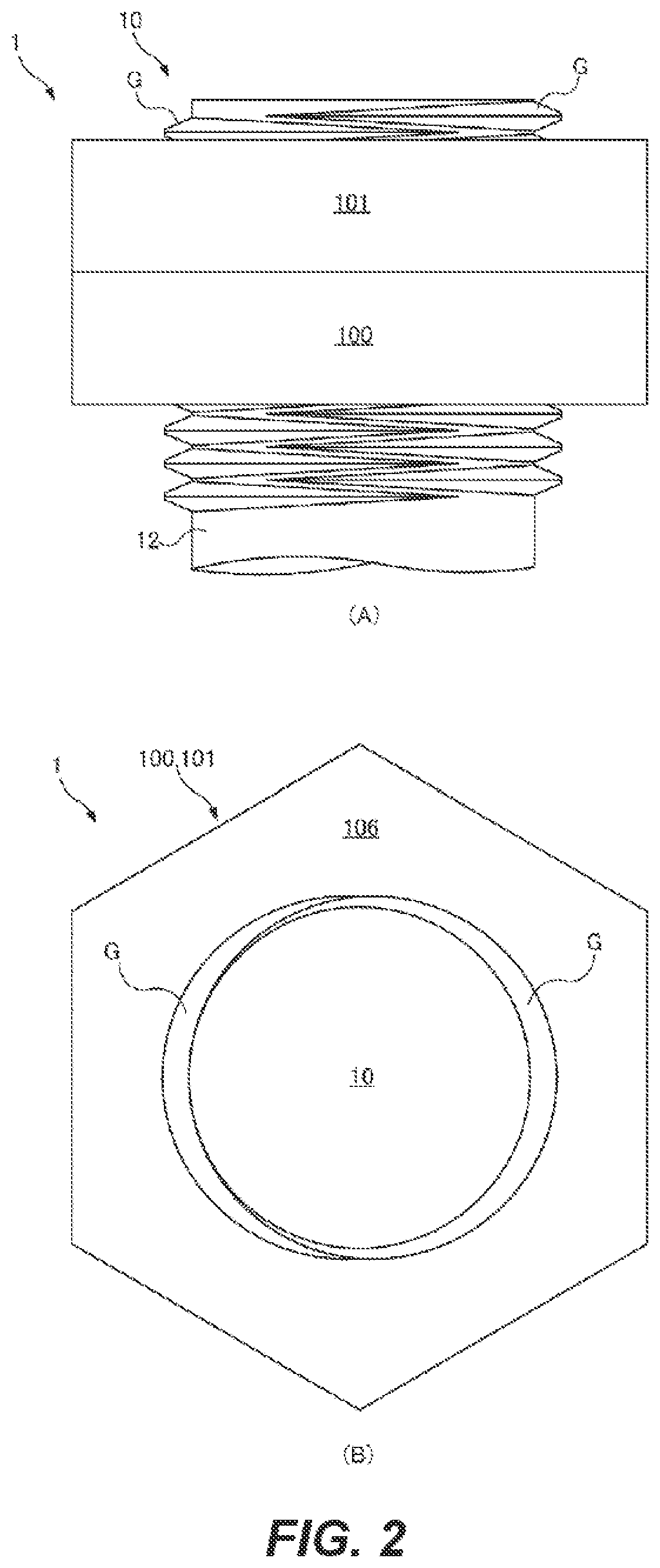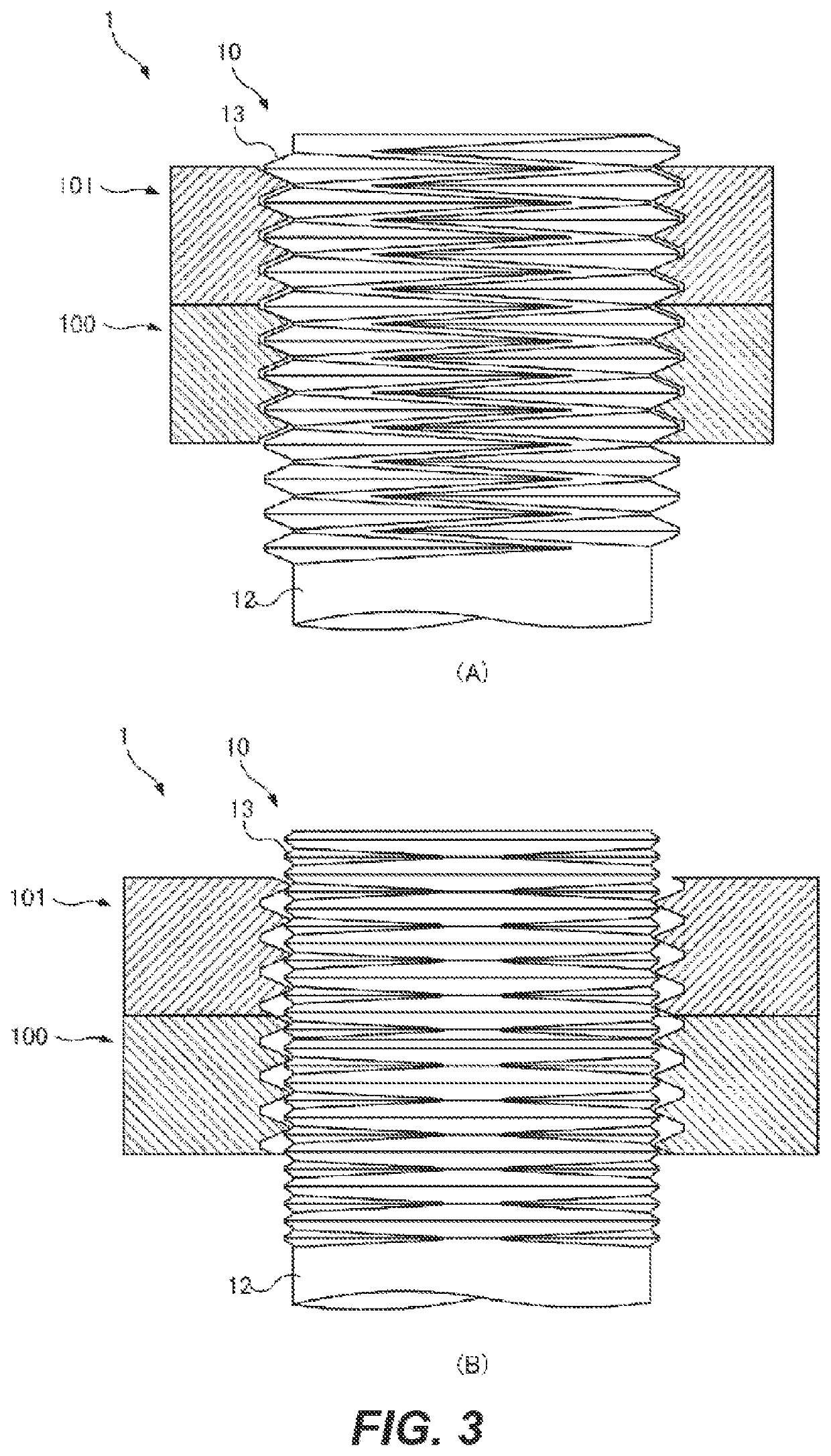Relative rotation prevention structure for screw, relative movement prevention structure, and relative movement prevention body
a technology of relative rotation and prevention structure, applied in the direction of threaded fasteners, fastening means, screws, etc., can solve the problems of shaft breakage, ratchet structure breakage, etc., and achieve the effect of reliable anti-loosening effect and reduced shaft fatigu
- Summary
- Abstract
- Description
- Claims
- Application Information
AI Technical Summary
Benefits of technology
Problems solved by technology
Method used
Image
Examples
first embodiment
[0108]FIG. 1 shows a screw-based fastening mechanism 1 to which a relative-rotation prevention structure 30 according to the present disclosure is applied. The screw-based fastening mechanism 1 includes a first female screw 100, a second female screw 101, and a male screw 10. The screw-based fastening mechanism 1 may fasten a fastening target member H. In the present embodiment, the first female screw 100 and the second female screw 101 adjacent thereto outwardly in an axial direction constitute a so-called double nut structure such that they prevent from loosening from each other. The relative-rotation prevention structure 30 is provided between the first female screw 100 and the second female screw 101.
[0109]A basic structure of the screw-based fastening mechanism 1 will be described. As shown in (A) of FIG. 5, in a male threaded portion 13 of the male screw 10, two types of male threaded spiral grooves including a first spiral groove 14 formed as a right direction screw configure...
second embodiment
[0166]In this second embodiment, as shown in FIG. 17, an entirety of the annular concave portion 160 becomes the second (screw-side) deformation-capable section 50. Therefore, using a fastening force when the first female screw 100 and the second female screw 101 approach each other, this second deformation-capable section 50 presses the first displacement section 40 of the first female screw 100 and thus is deformed so that a portion thereof is depressed outwardly in the radial direction. This deformation produces the second (screw-side) displacement section 60. Further, in FIG. 20, the second displacement section 60 is not produced because FIG. 20 shows a state before fastening.
[0167]The second deformation-capable section 50 of the second female screw 101 is made of a flexible material, compared to the first displacement section 40 of the first female screw 100. Further, the second deformation-capable section 50 has low rigidity compared to the first displacement section 40. In th...
third embodiment
[0195]In FIG. 31, there is shown an engagement mechanism 235 to which a relative-movement prevention structure 230 of a third embodiment is applied. This engagement mechanism 235 includes a first member 200 and a second member 201. In this embodiment, a first face 200A is formed on the first member 200, while a second face 201A is formed on the second member 201. When the two faces are brought into contact with each other and pressed against each other, the relative-movement prevention structure 230 is produced such that relative movement in the plane direction between the first member 200 and the second member 201 is prevented. Therefore, the engagement mechanism may be used for a so-called anti-slip, a brake, a positioning mechanism, etc. Further, in this embodiment, the first face 200A and the second face 201A become flat. The present disclosure is not limited thereto. The faces may be a curved face, a bent face, or an uneven surface.
[0196]The relative-movement prevention structu...
PUM
 Login to View More
Login to View More Abstract
Description
Claims
Application Information
 Login to View More
Login to View More - R&D
- Intellectual Property
- Life Sciences
- Materials
- Tech Scout
- Unparalleled Data Quality
- Higher Quality Content
- 60% Fewer Hallucinations
Browse by: Latest US Patents, China's latest patents, Technical Efficacy Thesaurus, Application Domain, Technology Topic, Popular Technical Reports.
© 2025 PatSnap. All rights reserved.Legal|Privacy policy|Modern Slavery Act Transparency Statement|Sitemap|About US| Contact US: help@patsnap.com



